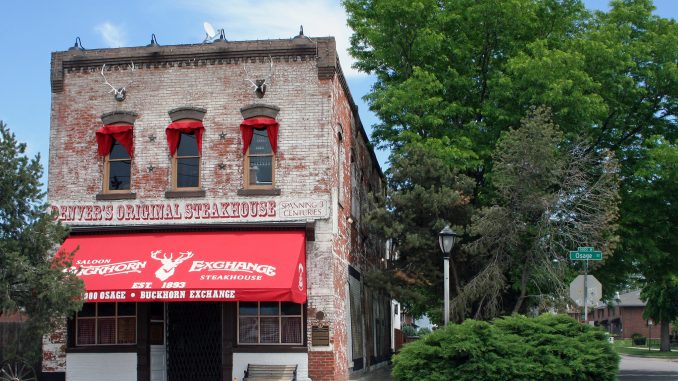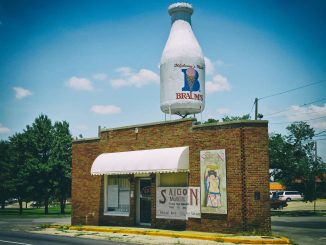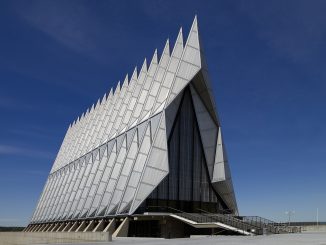
Colorado was established as a state on August 1, 1876, and the Buckhorn Exchange was pretty much there since the beginning. Officially founded in 1893 by Henry H. “Shorty Scout” Zietz, arguably one of the most colorful figures of the Old West (according to their website), The Buckhorn is the oldest restaurant in Colorado and one of The Ten Oldest Restaurants in the United States.
The story of the Buckhorn is as much the story of Zietz as it is that of Colorado and the Wild West. In 1875, a 10 year old Zietz met Col. William F. “Buffalo Bill” Cody and within two years had become one of his band of scouts. It was during this time that Zietz was given the nickname Shorty Scout by Chief Sitting Bull and the moniker stayed with him throughout his life. Zietz, Sitting Bull, and Buffalo Bill Cody formed a lifelong bond that only ended in 1949 when Zeitz passed away.
Opened for business at the end of what is now known as the Wild West, the Buckhorn Exchange has catered to all types of guests. From hard working laborers and cattlemen to a sitting President of the United States, the humble restaurant has a long and storied history.
The Buckhorn Exchange Restaurant took its original name “The Rio Grande Exchange” from the Rio Grande Railroad yards directly across Osage Street where the second floor of the Buckhorn Lodge housed railroadmen while they were away from home. Every Friday, as the railroadmen left work with fresh paychecks ready to be exchanged for gold, all they had to do was walk across the street where Zietz would cash their checks and give each one of them a token food for a free lunch and a beer to wash away the hard work of the long week. Zietz realized that a free lunch and some rowdy camaraderie would soon part men from their money.
The Buckhorn has chronicled the last days of the Wild West and the early days of Colorado itself. It was a place where the cattlemen, miners, railroadmen who built the West could rub shoulders and share a drink with the silver barons and businessmen who financed it. It seems that everyone from Indian Chiefs to roustabouts and gamblers dropped in at some point to dine on the finest food the west had to offer, much of which is still on the menu today.
In order to stay in business during the prohibition years in the United States, Zietz converted the front portion of the restaurant and saloon into a grocery. Like a few other restaurants that served liquor before prohibition and had established it as part of their business model, it seems that they might have had a little work-around for the problem of being a bar that didn’t sell alcohol. According to legend, Zietz would sell a loaf of hollowed out pumpernickel bread filled with a bottle of bootleg whiskey. It can be assumed that he sold a lot of pumpernickel during those few years.
When prohibition ended there were a few changes to Zietz’ Buckhorn Restaurant and Bar. One is that the name changed from “saloon” to “restaurant and bar”, a subtle change to keep up with the times. Another change is that the Buckhorn officially applied for a liquor license and was issued Colorado Liquor License #1 which is still proudly on display to this day.
President Theodore Roosevelt was an early visitor to the Buckhorn Exchange and when his train pulled in to the Rio Grande yards in 1905 he personally asked Zietz to serve as his guide and hunting partner. After dinner and drinks, the pair left by Presidential train to hunt Colorado’s Western Slope. A photo of the train and a flag from its engine are among the memorabilia on display.
In 1938, Chief Red Cloud, the nephew of Sitting Bull, slowly rode down the street with a full battle regalia of 30 Sioux Blackfoot warriors and ceremoniously turned over General George Custer’s saber to “Shorty Scout” Zietz. The saber was taken at in the Battle of the Little Big Horn, and while it could live in almost any museum in the world, is still owned by the Zietz family.
With its dark heavy wood interior and high pressed-tin ceilings, the restaurant has a feeling of an old timey hunter’s lodge more than that of a traditional family friendly restaurant. With 575 taxidermy animals covering the walls and 125 firearms hanging throughout the restaurant there is no mistaking that the wild west is alive and well at the Buckhorn. Some of the animals (particularly the golden eagle) that decorate the restaurant are protected species that if shot today would result in potentially long prison sentences.
The main dining area on the first floor, also known as the Buffalo Room, seats 20 and is the only part of the restaurant that is wheelchair accessible. The second floor features a lounge, bar, and Roofgarten. The Roofgarten can host up to 60 guests and may be rented for private events. An antique white-oak bar and back-bar made in Essen Germany in 1857 serve as one of the best features of the second floor Victorian lounge.
Buckhorn Exchange Facts
- The Buckhorn Exchange received the first liquor license in the state of Colorado.
- Five Presidents of the United States have dined at the Buckhorn; Teddy Roosevelt, Franklin Roosevelt, Dwight Eisenhower, Jimmy Carter, and Ronald Reagan.
- The story of the Buckhorn is that in 1875, a 10 year old Zietz met Col. William F. “Buffalo Bill” Cody and by the time he was 12 he was a member of the band of scouts.
- During his years as a scout, Zietz was nicknamed Shorty Scout by none other than Chief Sitting Bull.
- The Buckhorn Exchange is as much a museum dedicated to the Old West as it is a restaurant and bar.
- The restaurant opened in 1893 and is the oldest continuously operating restaurant in Denver.
- Buffalo Bill’s regular drink was a “Stone Fence,” half bourbon and half apple juice. It is said that he would only have one when he visited but it happened to be in a very very large glass.
- The taxidermy African Cape Buffalo was shot by President Teddy Roosevelt and given to the restaurant as a gift.
- The Buckhorn Exchange Restaurant and Bar is located at 1000 Osage St, Denver, CO 80204.
- Bob Hope, William “Buffalo Bill” Cody, Sitting Bull, Red Cloud, Jimmy Cagney, Garth Brooks, Charleton Heston, Scott Carpenter, Jack Swigert, Roy Rogers, Will Rogers and Great Britain’s Princess Anne (to name a few celebrities) have dine at the Buckhorn.
- The building itself was constructed by Neef Brothers Brewing Company in 1886.
- The Buckhorn Exchange was listed on the National Register of Historic Places in 1983 as the Zeitz Buckhorn Exchange.


